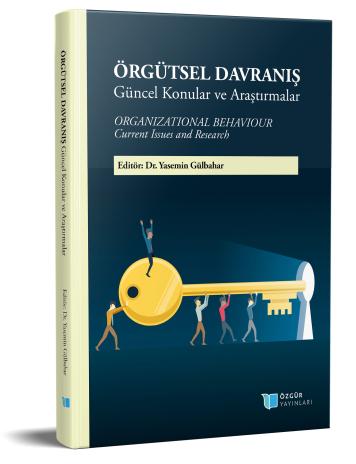
Liderlikte Lider Takipçi İlişkisi Odaklı Yaklaşımlar
Şu kitabın bölümü:
Gülbahar,
Y.
(ed.)
2023.
Örgütsel Davranış: Güncel Konular ve Araştırmalar.
Özet
Bu çalışmanın amacı işletme araştırmaları arasında önemli bir yer tutan liderlik konusuna ilişkin, klasik teoriler akabininde gelişen güncel görüşler nezdinde ele alınan, lider ve takipçilerin birebir ilişki kurması üzerinden liderlik tarzlarını ele alan çalışmalara dair bir perspektif sunulmasıdır. Klasik görüşlerde liderin özellikleri, davranışları ve durumlar ele alınmıştır. Durumsal yaklaşımın ardından, araştırmacılar lider ve her bir takipçi arasında gelişen farklı ve birebir ilişkiler olduğunu fark etmişlerdir. Lider ve takipçi arasındaki ilişkide sergilenen liderlik tarzı, takipçilerin motivasyonu, iş tatmini ve performansı gibi birçok karlılık çıktısına etki edebileceğinden önem arz etmektedir. Bu kapsamda bölümde ilk olarak dönüşümcü liderlikten, ardından etkileşimci liderlikten ve son olarak lider-üye etkileşim modelinden bahsedilecektir. Dönüşümcü liderlikte odak nokta, liderin takipçilerini daha gelişmiş bir kişisel versiyonlarına götüren bir değişim ajanı rolü benimsemesi iken, etkileşimci liderlikte işlerin yapılmasında ödül-ceza gibi klasik yöntemleri kullanan bir yönetici rolünden bahsedilmektedir. Dönüşümcü liderlik ve etkileşimci liderliği bir araya getiren tam kapsamlı liderlik modeli, lider etkinliğine ilişkin özet bilgileri, liderliğin unsurları bazında adım adım sunmuştur. Lider-üye etkileşim modelinde odak nokta ise lider ile yakın ilişkiler kuran üyelerin oluşturduğu iç grup ve liderle ilişki kurmayı formel bir eksende gerçekleştiren dış grup üzerinedir. İç grup ve dış grupta olmanın sonuçları farklıdır, örneğin iç grup üyeleri daha yüksek performans gösterirken, dış grupta performans seviyeleri formel iş tanımı kapsamında orta ila düşük seviyelerde olabilir. Her teori için akış; tanım, liderliğin unsurları ve söz konusu liderlik tarzının örgütsel davranış açısından ele alınan bağımlı değişkenlerle ilişkisine yönelik araştırma sonuçlarından oluşmuştur. Örgütsel davranış açısından önemli sayılan bağımlı değişkenler, bireysel performans ve bireysel performansa etki eden değişkenlerdir. Değişkenlerin gruplamasında liderin özellikleri ve takipçilerin motivasyonu, iş tatmini ve performansları baz alınmıştır. Söz konusu anahtar kelimelerle yapılan aramalar sonucu derlenen korelasyonel çalışmalar, teorilerin uygulama hayatındaki yansımasına ilişkin argümanları özetler niteliktedir.

